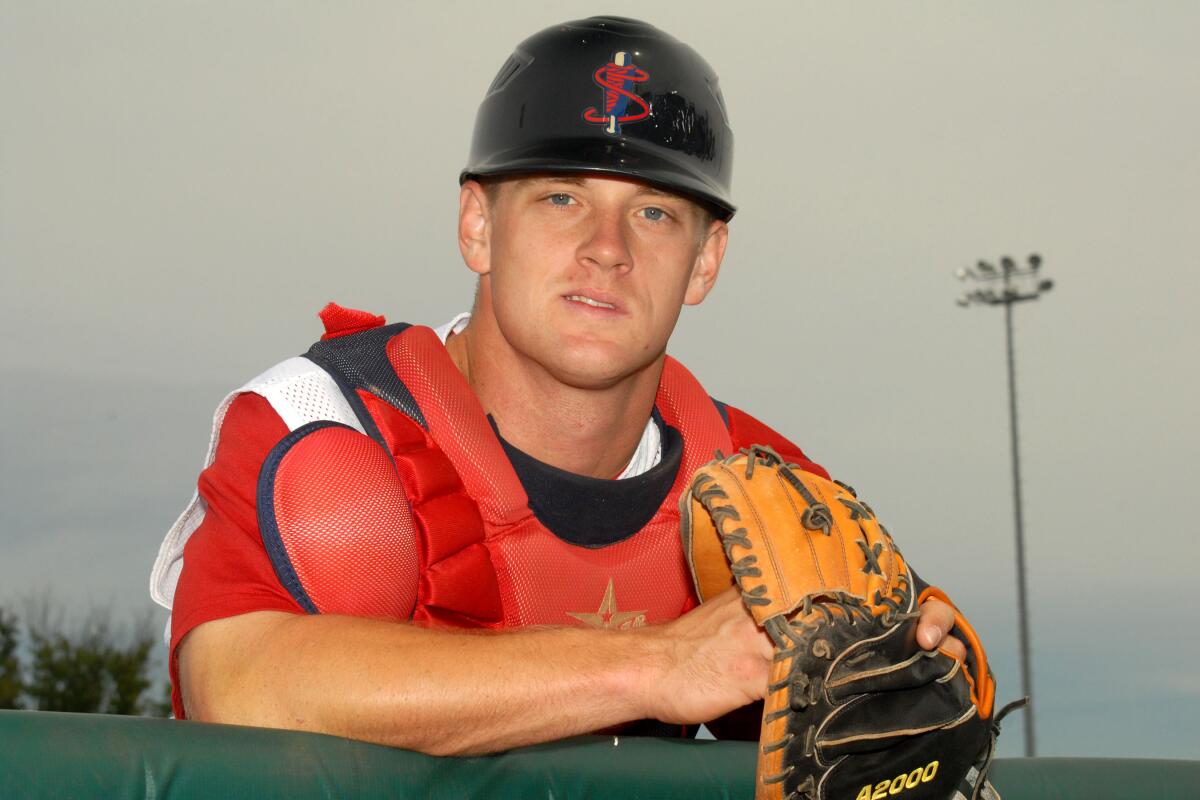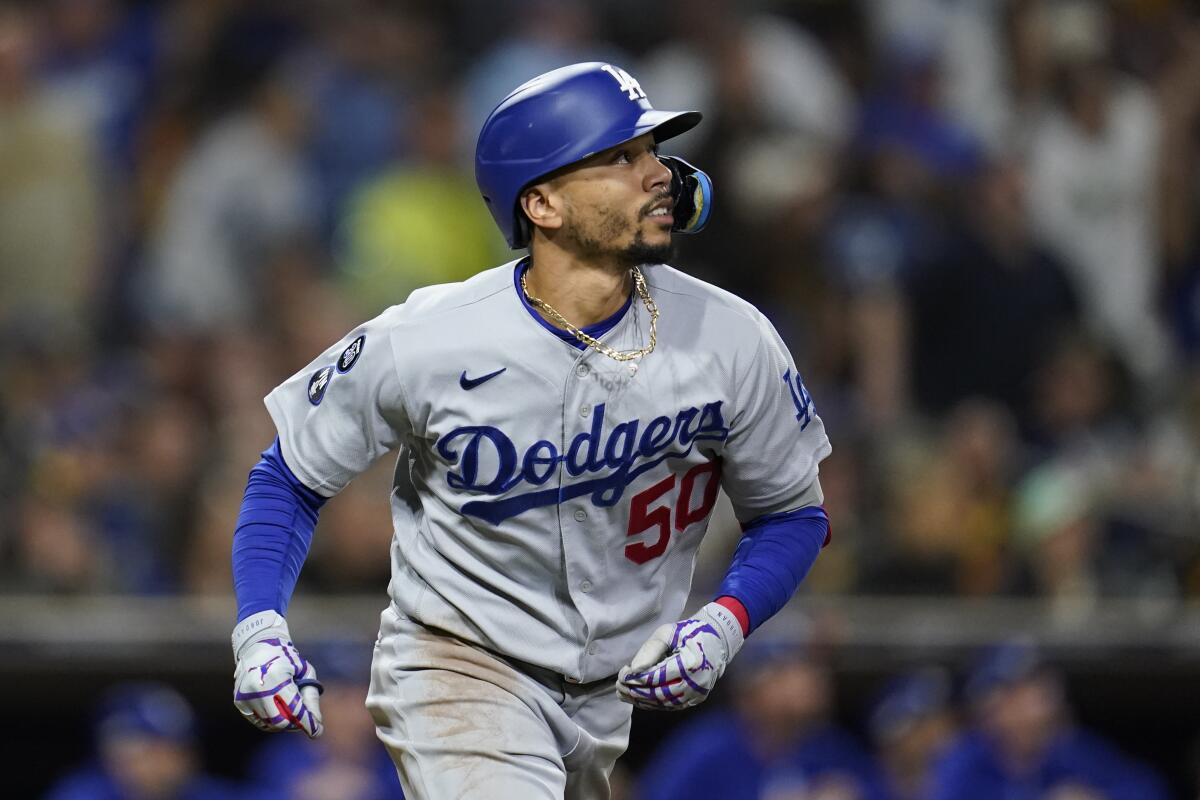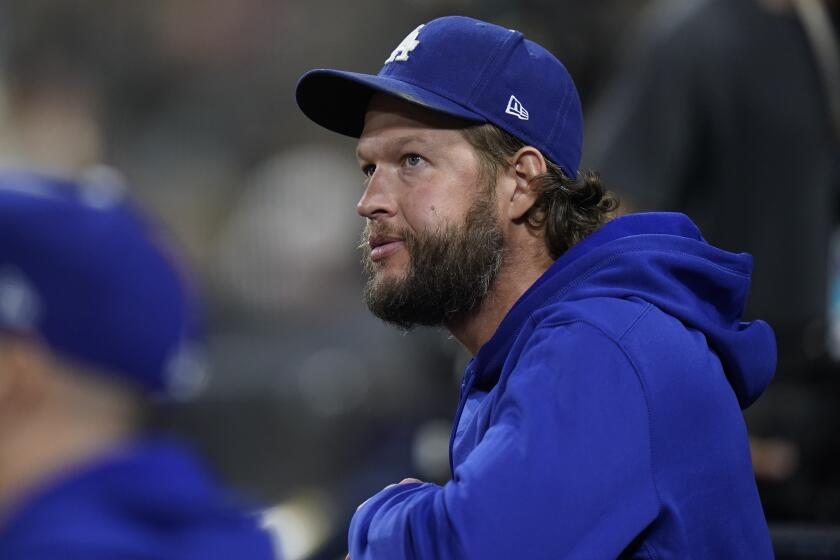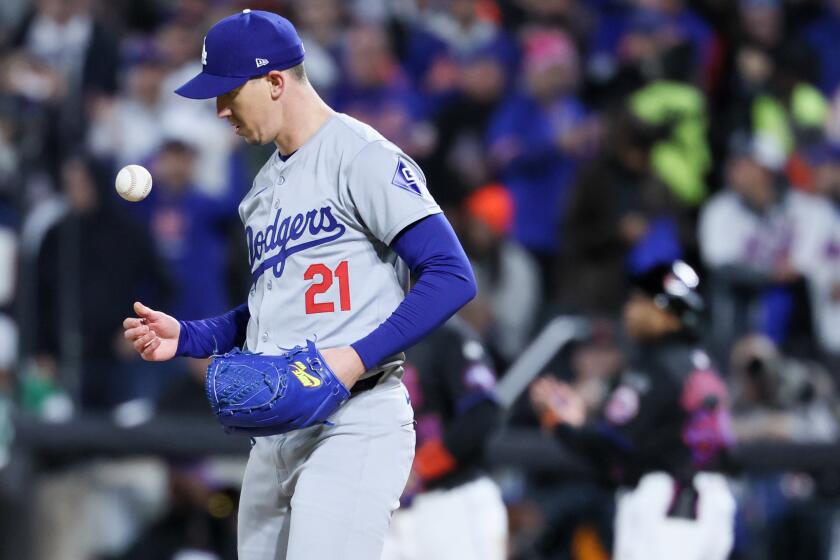Column: A Red Sox employee was suspended for sign-stealing role. He now works for the Dodgers

- Share via
PHOENIX — As spring training opened, there were rumblings in some corners of the industry about a relatively unpublicized addition the Dodgers made over the winter.
How could they have hired the engine of a sign-stealing operation that might have contributed to them losing the 2018 World Series?
How could they have hired former Boston Red Sox video replay coordinator J.T. Watkins?
The most important voice on the Dodgers didn’t raise any such questions Sunday when asked about Watkins.
Clayton Kershaw said he didn’t have any problem with them bringing on the 33-year-old former minor league catcher who will assist Dodgers players with a hitting game plan.
Dodgers manager Dave Roberts has been a beacon of positivity in spring training, rediscovering his love for the team after last year’s playoff meltdown.
“No matter what enhancements technology had back then, there needs to be a clear distinction between what the Astros did and what everybody else did,” Kershaw said.
In other words: Who cares?
Not every rule violation is the same.
The Houston Astros, who defeated the Dodgers in the 2017 World Series, used a live video feed to steal signs in real time and relayed that information to hitters.
The Red Sox’s scheme “by its very nature, was far more limited in scope and impact,” according to the findings of an investigation by the commissioner’s office that were released in 2020.
Before and after games, Watkins was tasked with decoding opponents’ signs, which was legal. As the team’s video replay coordinator, however, he also used his access to live game feeds to “supplement or update” his work, according to the commissioner’s office. This in-game use of video to decipher signs was illegal.
The details gathered by Watkins were passed to the bench and used by runners who reached second base, who in turn would steal the catcher’s sign and signal to the hitter the kind of pitch that was about to be delivered. Therefore, the commissioner’s office concluded, “The information was only relevant when the Red Sox had a runner on second base.”
Watkins was suspended for the 2020 season. He was the only member of the Red Sox who was punished.
Dodgers outfielder Mookie Betts, who was on the 2018 Red Sox, acknowledged that he was aware his team was using live video feeds to steal signs.
“Yeah,” Betts said Sunday, “everybody was.”
However, Betts said the Red Sox didn’t use the sign-stealing system in the World Series against the Dodgers. The Red Sox batted .353 with runners in scoring position in the series, which they won, four games to one.
The Red Sox were found by the commissioner’s office to have employed the illegal sign-stealing program only in the 2018 regular season, as the investigation uncovered insufficient evidence to conclude they also cheated in the 2018 playoffs or the 2019 regular season.
In that 2018 regular season, Betts claimed, the scheme was infrequently used.
“Every now and …” Betts started to say. “It’s kind of hard to remember.”
So this wasn’t a daily practice?

“No!” Betts said with a smile. “This is what I’m trying to say. People are trying to make it like we’re cheating. Give us credit. We had a good team. Give us some credit. We had Cy Young winners. We had MVPs. We had Gold Glove winners. We had Silver Sluggers. We had all that. Take that into account.”
Betts confirmed a detail in a recently published book by Evan Drellich on the sign stealing in baseball, “Winning Fixes Everything,” about how Red Sox players donated money to Watkins while he was on his unpaid suspension. Watkins later returned to the organization as a scout.
“We all chipped in because he did so much for us,” Betts said. “The perception is, ‘Oh, we gave him money because ...’ No. He’s very good at his job. He was the one up at 3 o’clock in the morning, scouting, making sure of everything we needed to do.”
Betts described Watkins as a “very good buddy of mine.” Betts and Watkins were minor league teammates. Betts was drafted by Watkins’ father, a Red Sox area scout. And when the Dodgers were looking another hitting coach, Betts recommended Watkins. Designated hitter J.D. Martinez, who moved from the Red Sox to the Dodgers this offseason, also endorsed him.
“He’s very good at his job,” Betts said. “He played, so he gets it. He knows the information that we need to know and he provides it.”
Watkins wasn’t made available for comment by the Dodgers.
General manager Brandon Gomes said that when the Dodgers interviewed Watkins, they asked him about the Red Sox’s illegal sign stealing and now have a good idea of what happened. Asked if his understanding of the situation was similar to what Betts described, Gomes said it was.
Gomes also said Watkins was “remorseful.”
Follow along for the latest news and analysis from Dodgers spring training at Camelback Ranch in Phoenix ahead of the 2023 MLB season.
Watkins “vehemently” denied using the replay system to use signs when the Red Sox were investigated, the commissioner’s office wrote in its findings. The same investigation also concluded Watkins was a “key participant” in an incident in late 2017 in which the Red Sox used an Apple Watch to relay signs decoded in the video room to the bench.
“We had the ability to read the report and speak with the commissioner’s office and felt comfortable that after serving his suspension, that he was going to be a positive contributor to our organization,” Gomes said.
Watkins won’t have access to a live game feed in his role with the Dodgers.
Manager Dave Roberts said of Watkins’ responsibilities: “I think it’s just to give us whatever competitive advantage that we can get on the preparation side, the potential opposition pitchers, tendencies, and also work with our hitting guys closely.”
Asked if he knew how that sounded, Roberts replied, “I do. But I don’t want to say, ‘Within the rules.’ It should be, without saying, within the rules.”
Roberts said he didn’t hold anything against Watkins because an employee in his position would have to do what he’s told if he wants to keep his job.
Roberts went on to make a point similar to Kershaw’s, about the unfairness of how every team from that period is now being lumped together with the Astros.
Injury risk assessment is only part of the reason why players like Dodgers pitcher Clayton Kershaw can’t get insurance for the World Baseball Classic.
The Dodgers found themselves in that position again earlier this month when “Winning Fixes Everything” was published. The book included a number of allegations of illegal sign stealing against the Dodgers that were made by anonymous sources.
Roberts said last week the Dodgers were one of the teams investigated by the league after the 2018 season but that the inquiry “came up with nothing.”
The manager said he wasn’t bothered by the accusations because “I think that for people not to put their name on something, I just think it’s [expletive]. For them to not be able to do that and make these random allegations, I just don’t put too much thought into it.”
Not every accusation is the same. Not every crime is either.
Watkins deserved another chance. The Dodgers offered him one.
More to Read
Are you a true-blue fan?
Get our Dodgers Dugout newsletter for insights, news and much more.
You may occasionally receive promotional content from the Los Angeles Times.














